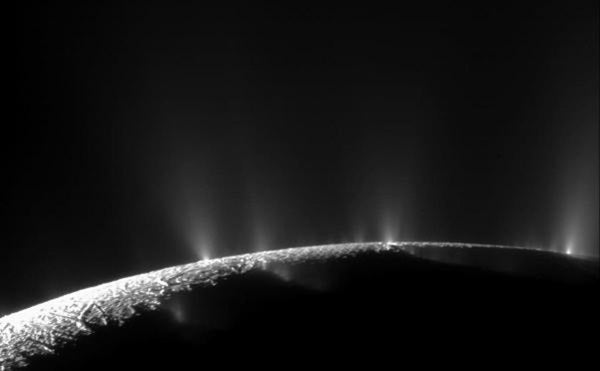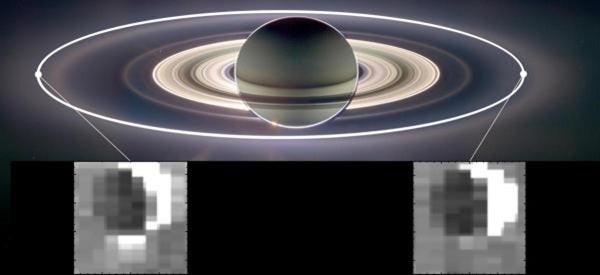“This new data is very important to our understanding of the ‘plumbing’ of the water conduits below the surface of Enceladus that connect the water vapor eruption to the reservoir of water below the surface,” said Candice Hansen from the Planetary Science Institute in Tucson, Arizona.
Earlier data from Cassini showed that Enceladus continuously spews out a broad geyser of gas and dust-sized grains originating from the moon’s subsurface ocean of salty liquid water. The plume, originating from the region around the moon’s south pole and extending hundreds of miles into space, is more than 90 percent water vapor.
Other instruments on the Cassini spacecraft have observed that the number of water ice grains being ejected from the small moon was three times greater when Enceladus was farthest from Saturn compared to when it was closest in its elliptical orbit. This was Cassini’s first opportunity to see if the amount of gas that propels the particles from fissures — called tiger stripes — across Enceladus’ south pole also changes with its orbital position.
Hansen and her team focused their attention on one supersonic jet known informally as “Baghdad I.” The researchers found while the amount of gas in the overall plume did not change much, this particular jet was four times more active than previously observed during other times in Enceladus’ orbit. Instead of providing just 2 percent of the plume’s total water vapor, as Cassini had previously observed, it was at this time supplying 8 percent of the plume’s gas.
The increase in the jet’s activity is what causes more icy dust grains to be lofted into space, with the jets that lift the observed ice grains much stronger when Enceladus is farthest from Saturn.
“How do the tiger stripe fissures respond to the push and pull of tidal forces as Enceladus goes around its orbit to explain this difference? We now have new clues!” Hansen said. “It may be that the individual jet sources along the tiger stripes have a particular shape or width that responds most strongly to the tidal forcing each orbit to boost more ice grains at this orbital longitude.”











